In this article, we’ll explore 17 powerful SEO tips you need to implement to finally rank first on Google.
These tips aren’t just theoretical; they come from hands-on experience: I personally tested and implemented all these tips to improve my rankings and get more traffic, so you know that they ACTUALLY WORK.
Here are the most important SEO tips to follow:
- Match the search intent
- Pick the right keywords
- Check keywords data
- Improve Page Speed
- Optimize Page Title, Meta Description, and URL
- Optimize your visuals
- Organize Titles Hierarchy
- Conduct Regular Site Audits
- Produce high-quality content
- Do on-page SEO
- Do high-quality link-building
- Delete dead pages
- Update your content regularly
- Insert Internal and External Links
- Target Featured Snippets & “People also ask” Questions
- Voice Search Optimization
- Optimize for Local SEO
Match the Search Intent
Understanding what people are searching for and how they’re searching for it gives you the best chances of ranking.
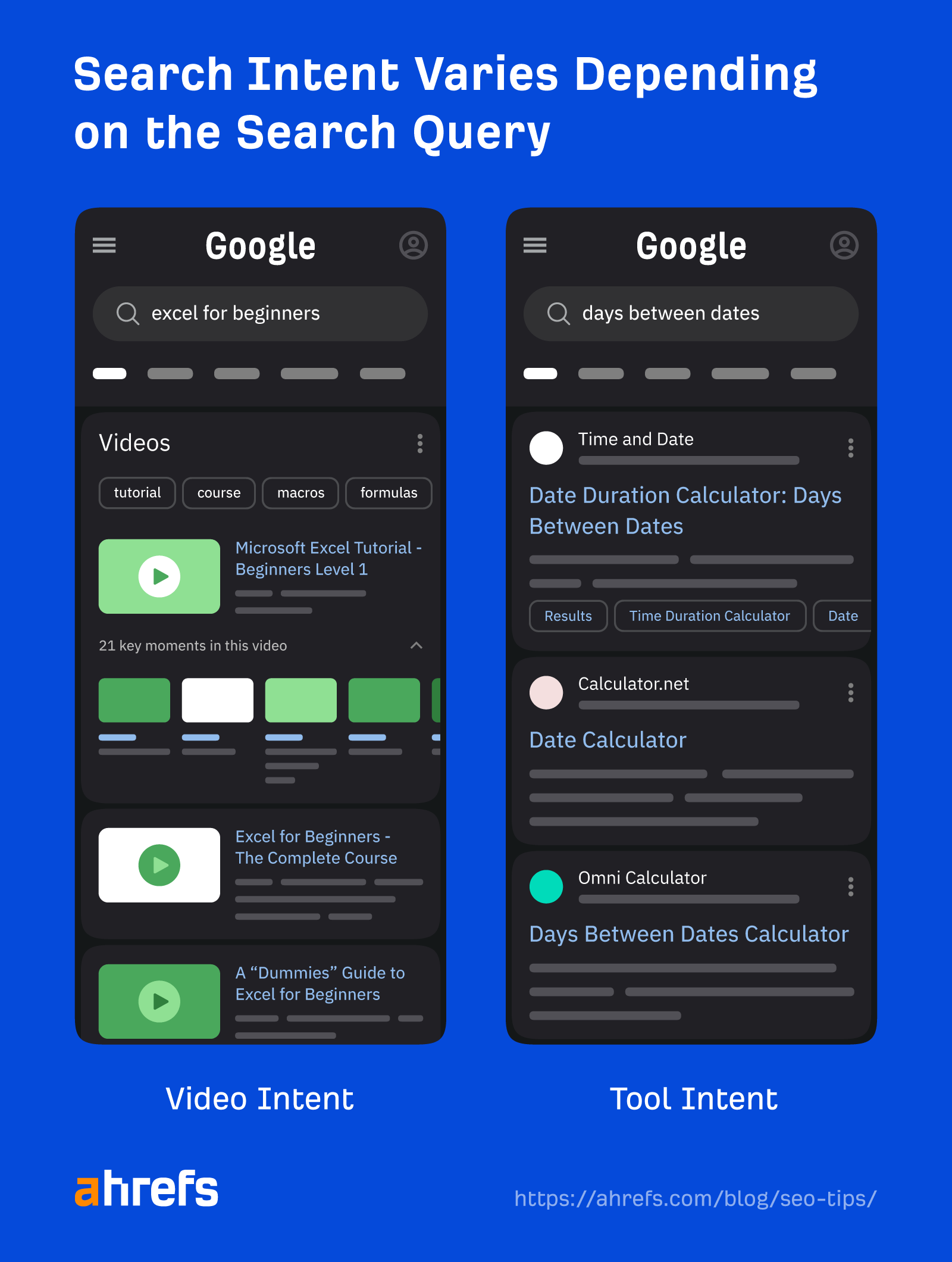
For instance, if you’re writing an article about “how to make a cake” and decide to insert affiliate links for Cooking Equipment, you might be missing the mark.
Most people searching for a tutorial on “how to make a cake” probably already have the equipment they need.
However, if you create a post about “best Freestanding Ovens,” you’re likely targeting a different intent – people who are actively looking to purchase equipment.
Google is able to understand how people interact with the content and which is the most relevant one based on their Search Query.
Pick the right keywords
When it comes to mastering Search Engine Optimization, choosing the right keywords is your first crucial step.
Imagine this: you spend hours crafting a brilliant piece of content, pouring your heart and soul into every word. You hit publish, expecting hordes of readers, but nothing happens.
Think of your primary keyword as the star of the show, the main topic of your content. Usually, it is represented by 1 keyword.
Secondary keywords are supporting actors, providing context and depth to your content. Usually, they’re represented by 2/4 keywords.
These secondary keywords help Google understand the scope of your content and its relevance to various search queries.
You can use the Keyword Magic Tool (7-day free trial) to find your primary and secondary keywords. Otherwise, yuo can do keyword research on advanced paid tools like Ahrefs or Semrush.

Here’s how it works:
first, type your seed keyword (it usually represents the general main topic of your article)
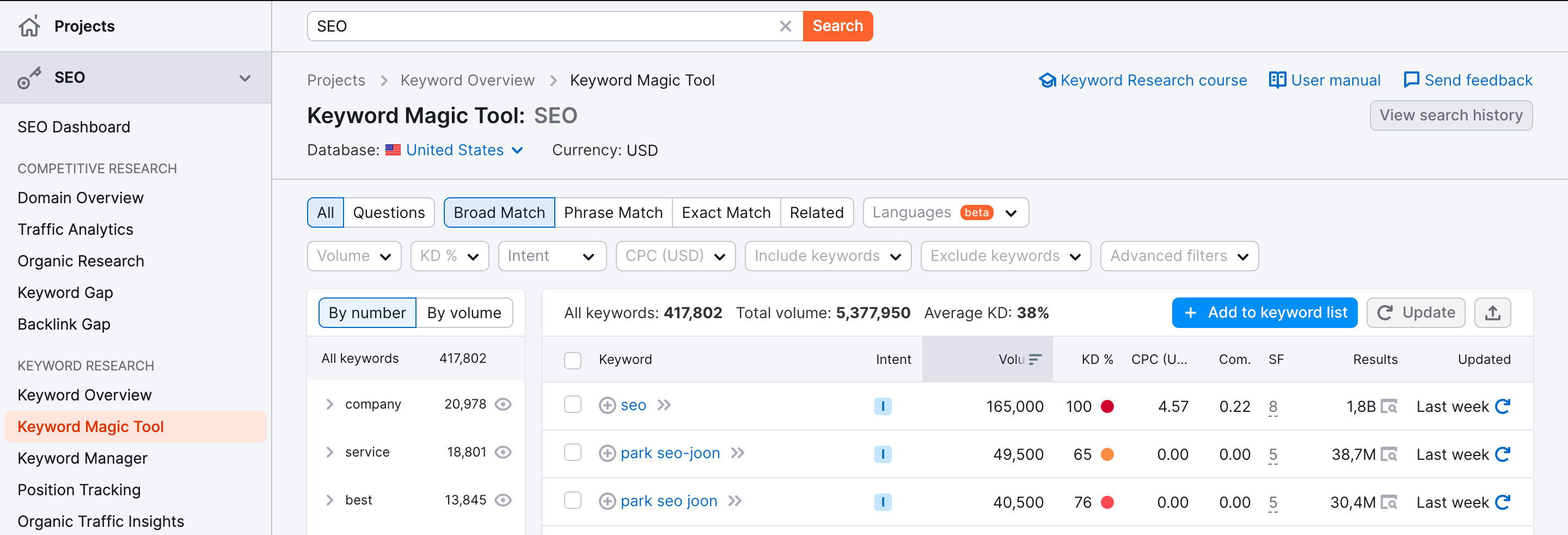
Next, explore the matching terms and choose the main topic you want to focus on.

This will represent your primary keyword.
Then proceed to select your secondary keywords (supporting content).
Example:
– Seed Keyword: SEO
– Primary Keyword: SEO for small business
– Secondary Keywords: SEO services for small businesses, affordable SEO services for small businesses, and local SEO for small businesses
Alternatively, to classic keyword research, you can conduct a KOB Analysis (Keyword Opposition to Benefit analysis) it can be a great way to discover new topics and prioritize your content in order to rank faster.
Check keywords data
Not all keywords are equal.
To find the best ones, check specific data:
- Low difficulty (also defined as KD)
- High search volume
- Low competition (Usually defined by the DR or Page AS of competitors)
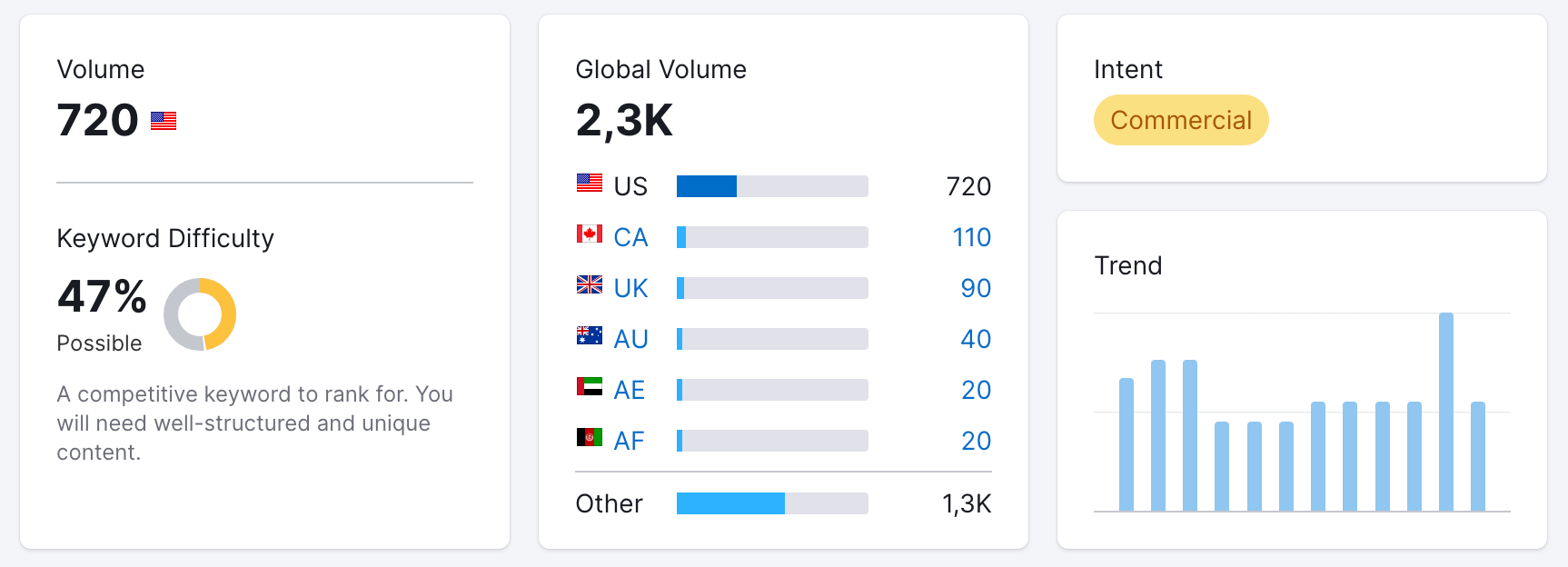

Every niche offers opportunities, and there are always emerging trends to tap into.
Improve Page Speed
First impressions matter.
A study by SEMrush found that websites with lower bounce rates tend to rank higher in search results.
Therefore, a higher bounce rate can negatively affect your SEO, and site speed is strictly related to bounce rate.
Google research about mobile site page speed shows that as page load time goes from one second to 10 seconds, the probability of a mobile site visitor bouncing increases by 123%.

You can understand why checking your site speed is crucial.
Use the free Tool PageSpeed Insights to find out about what’s slowing your site down.
How can you improve your Page Speed?
- Use Content Delivery Networks (CDNs) to distribute your content globally, ensuring rapid loading times for users worldwide.
- Remove unnecessary plugins
- Use WProcket, a free caching plugin that improves your website loading speed.
Optimize Page Title, Meta Description, and URL
Page titles and meta descriptions serve as a preview of what your page is about and play a significant role in encouraging organic visitors to click through to your site.

How to Optimize Page Title, Meta Description, and Url:
- Be clear, concise, and intriguing to entice readers to explore further
- Place the primary keyword in the Page title, Meta description, and URL
- Make sure the URL is short and readable, and avoid inserting dates like “Best seo software of 2023” or numbers like “10 best seo software”
Optimize your visuals
Image Alt text is essential for SEO because it provides textual descriptions of images.
Search engines rely on these descriptions to understand images, improving your site’s accessibility and search engine rankings.
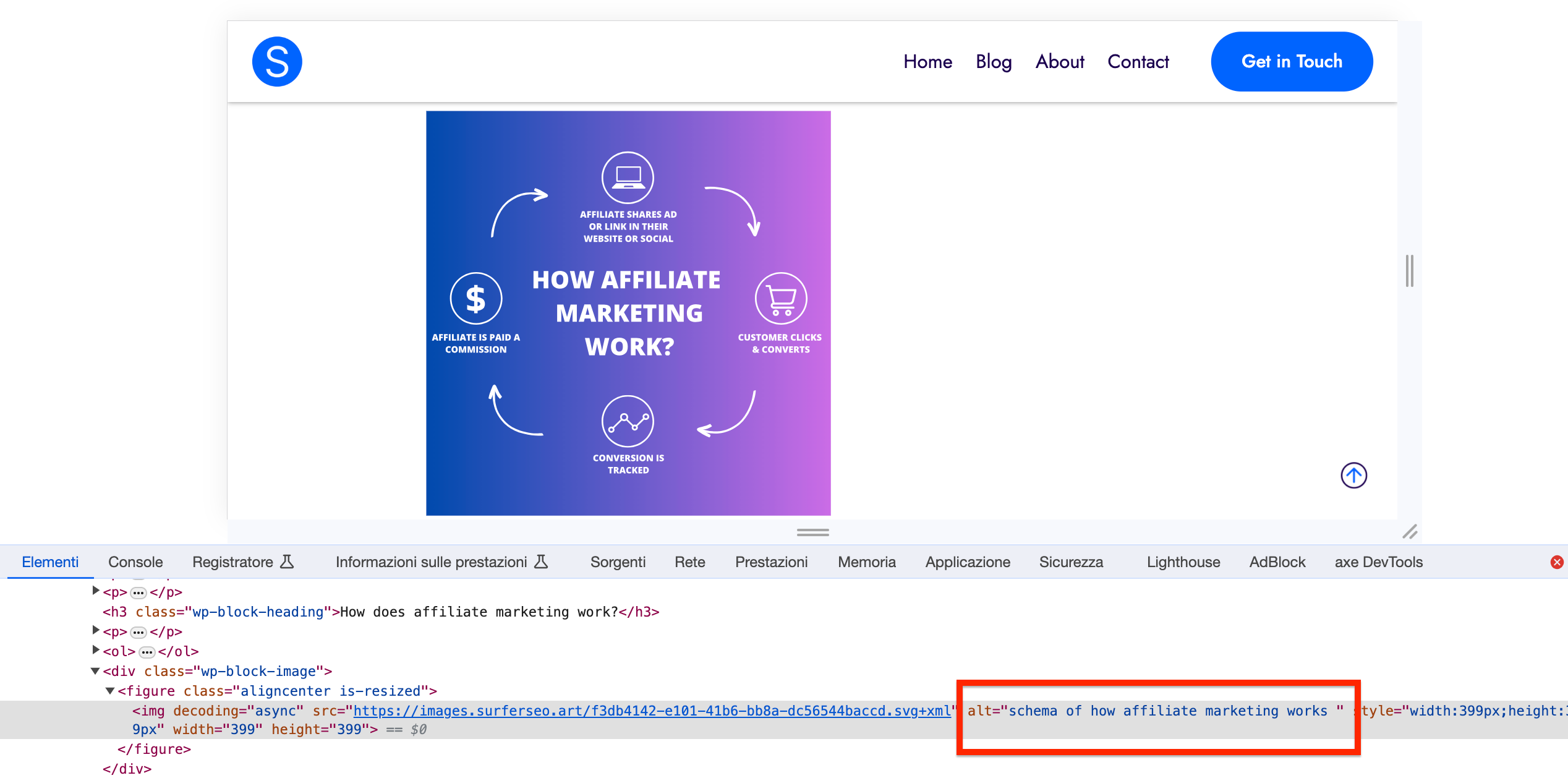
How to write an alt text?
- Describe the image as it is, avoid using “image of…”, or “illustration of…”
- Make it shorter than 125 characters
- Include the target keyword if it’s possible
Organize Titles Hierarchy
Inserting titles with the proper hierarchy provides both visitors and search engines with a structured overview of your content.
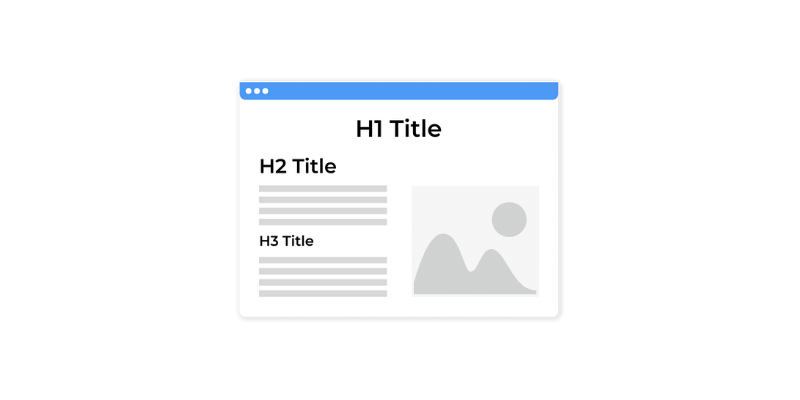
Visitors can quickly scan a page, understanding its essence, while search engines grasp your page’s structure and relevance.
It’s a win-win situation that ensures everyone gets the message effectively.
Conduct Regular Site Audits
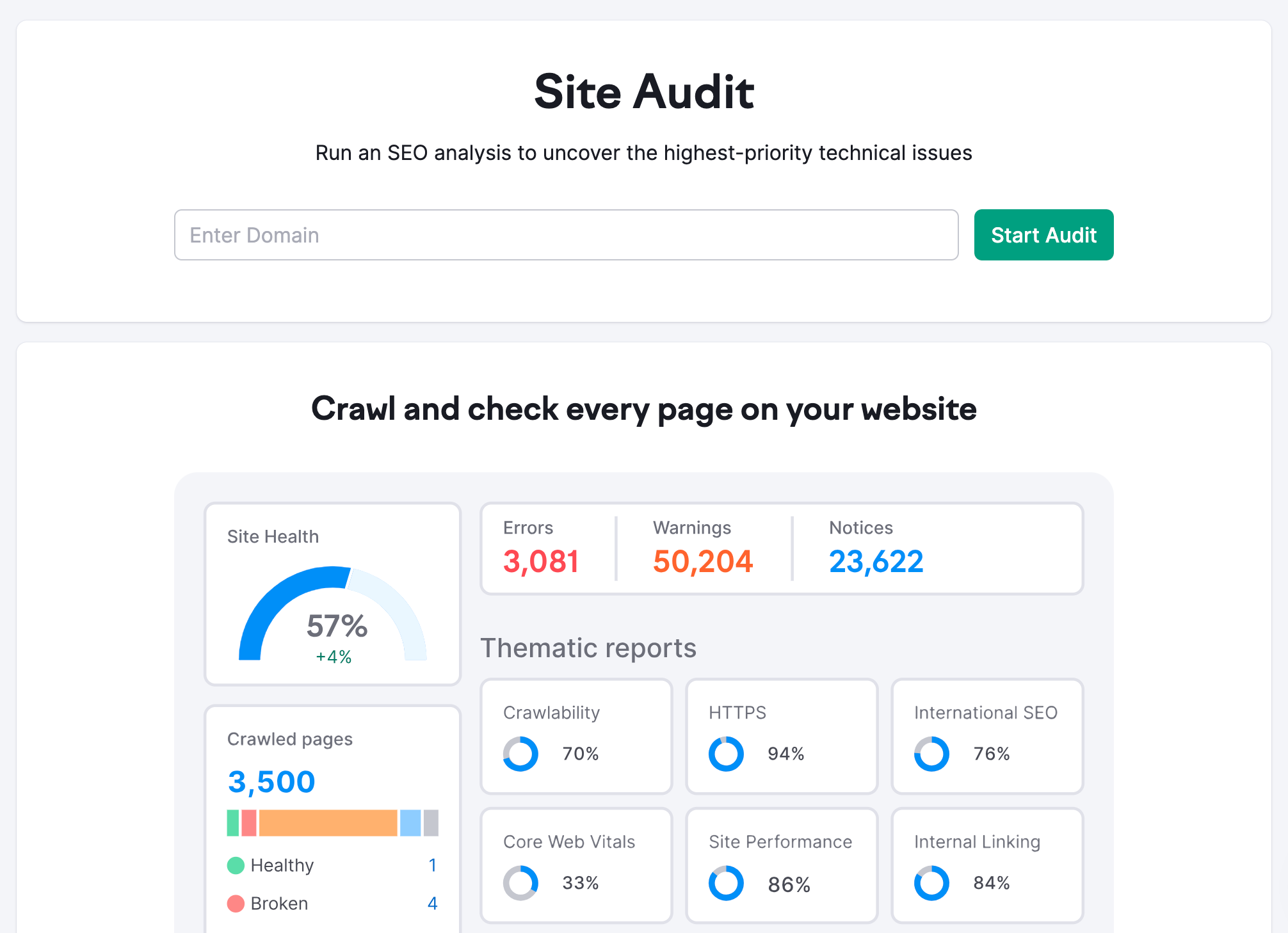
Conduct routine audits to identify issues, broken links, and slow loading times to promptly fix and enhance user experience, improve SEO rankings, and ensure your website stays relevant and competitive.
You can use tools like Semrush (paid) or Screaming Frog (free) to set scheduled or recurring website audits or S
Produce high-quality content
Quality content enhances user experience and boosts your site’s credibility and trustworthiness.
It’s crucial to understand your audience’s needs and provide valuable information in a clear and concise manner.
Here’s what you can do to master SEO Copywriting:
- Focus on writing for humans first.
- Engage your readers by asking and answering relevant questions.
- Cut the fluff and get straight to the point.
- Use real-world examples and practical use cases, making it easier for users to grasp complex concepts.
- Use short, concise sentences and powerful language
Keep in mind Google’s guidelines about E-E-A-T (Experience, Expertise, Authoritativeness, Trustworthiness).
Google values content created by experts who are able to demonstrate expertise in the subject matter.
Therefore, the content you produce has to be valuable and beneficial to users.
Do on-page SEO
Semantically Related Keywords Matter
Google isn’t just reading individual keywords, it analyzes the overall theme of your content. This is why putting your on-page seo into place is crucial.
Related: on-page seo checklist
Use semantically related keywords that are conceptually connected to your primary keyword to give depth and context to your content and help Google understand the topic.
You can use On-Page SEO Tools like SurferSEO to write optimized articles from the very beginning.
SurferSEO suggests how many words, headings, paragraphs, and images the article should have.
Plus, it shows relevant keywords you should target and how many times to insert them into the text.

Google loves a well-rounded, comprehensive topic.
Using semantic keywords naturally enriches your content, making it more appealing to the search engine’s algorithms.
Smart Placement of Your Primary Keyword
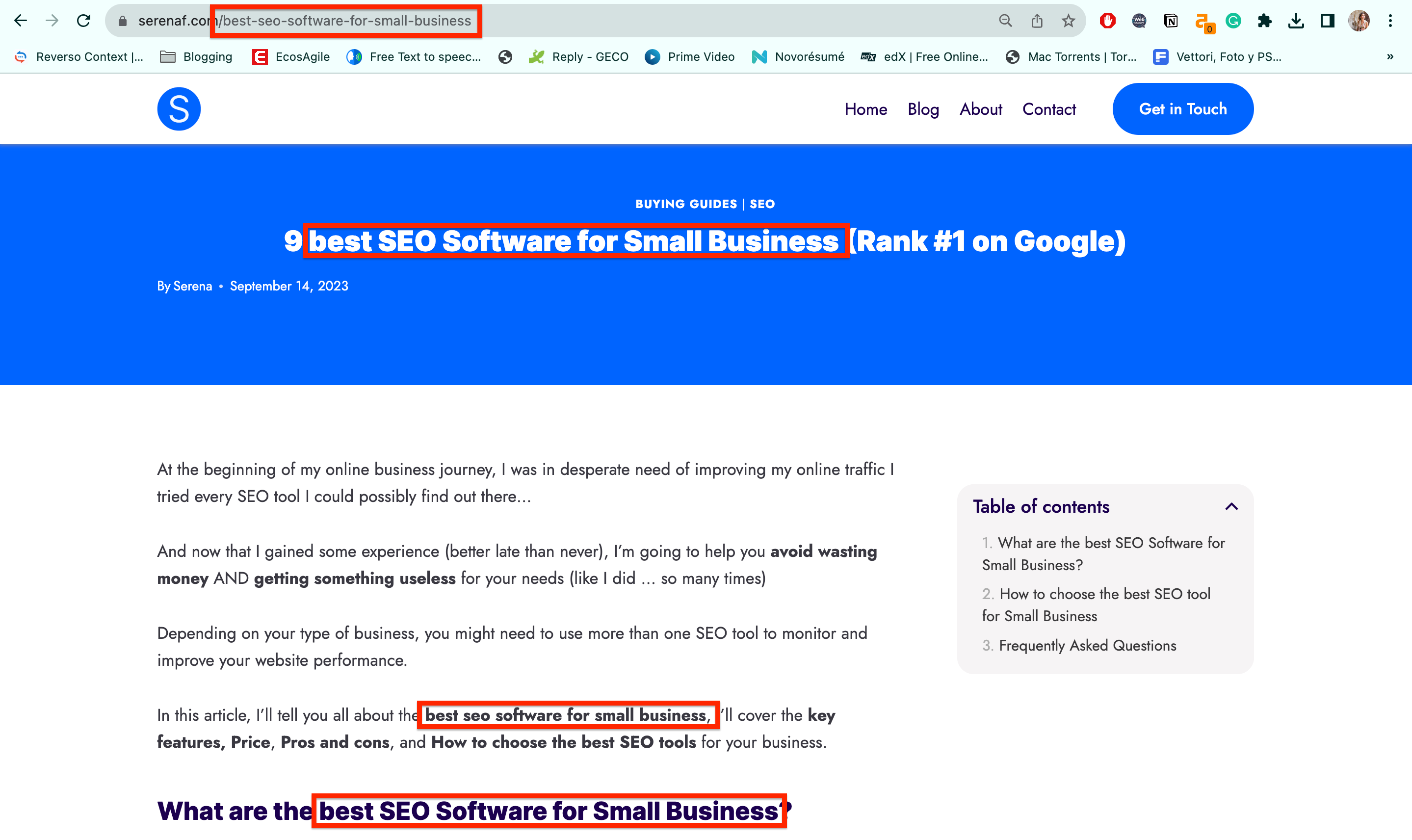
Where you place your primary keyword matters.
Here are some key locations to consider:
- Title Tag: Your primary keyword should appear in the title tag of your page. This is like the headline of your article for both readers and search engines.
- URL: Ensure your target keyword is part of the URL.
- Opening Paragraph: Introduce your primary keyword within the first 100 words of your content.
- H2 Heading: Just like your title tag, H2 headings are essential signposts for Google. Include your target keyword here to reinforce the focus of your content.
Do high-quality link-building
Link-building tips for a strong off-page SEO strategy:
- Get backlinks for your visual assets by creating unique visual content like infographics and charts.
- The quality of links is way more valuable than the quantity when it comes to link building. Focus on getting links from authoritative websites. Use SEO tools link Ahrefs to find authoritative websites to reach out to and possibly get backlinks from.
- Make the link-building process look natural like you had no part in it.
One tactic to do so is by getting indirect backlinks.
How can you achieve this?
Create linkable content, such as Skyscraper content, or have different partners to exchange links with.
Delete dead pages
Delete dead pages that don’t bring you any traffic or are off-topic, this way google sees your website as authoritative in one specific topic and it’ll be easier for you to rank for a precise niche.
Update your content regularly
As Google continues to prioritize content that is fresh and relevant for its users, updating and republishing old blog post(s) with new content and images can increase organic traffic by up to 106%.
How can you make the most of these updates?
- Reorganize your content in a way that is more readable and clear for users.
- Add visuals like graphics, videos, and images.
- Re-write titles to make them more appealing and update them especially if they contain a date
- Add new internal and external links
the ultimate goal is to keep readers engaged, improve search engine rankings, and drive more traffic to your website.
Insert Internal and External Links
When it comes to optimizing your website for search engines, utilizing internal and external links is crucial.
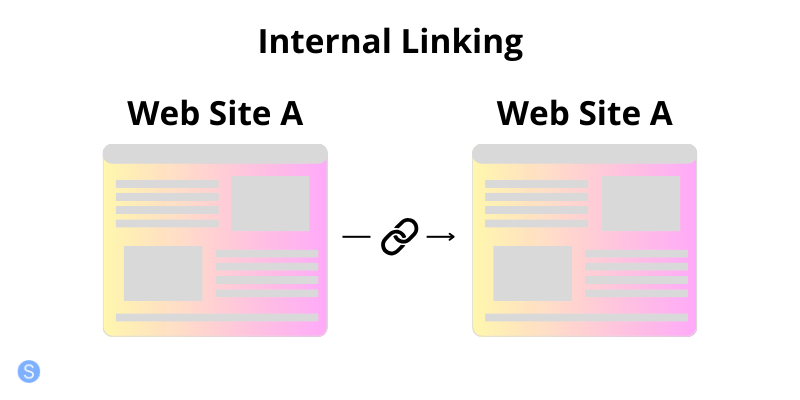
Internal links allow you to navigate your site more efficiently and lead them to more content that’s relevant to their interests.
Internal links improve user engagement and your crawl efficiency. Linking to significant pages on your site, signals to search engines that these pages are vital.
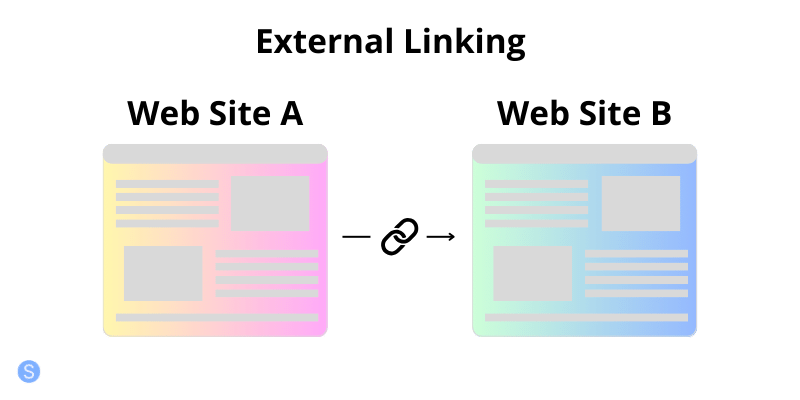
External links not only provide additional resources for your audience, but they also establish your site’s authority and credibility to search engines.
When implementing internal and external links, use descriptive link text and only link to relevant content to avoid a forced or unnatural appearance.
By creating a “best” post and supporting it with informational posts that internally link to the main post, you can establish authority and get the so-called link juice (linking power that is passed on by internal linking to other internal subpages.)
Target Featured Snippets & “People also ask” Questions
Snippet bait content is a specific type of content designed to target and potentially appear in featured snippets on search engine results pages (SERPs).
Featured snippets are short, concise pieces of information displayed prominently at the top of search results to quickly answer users’ queries.
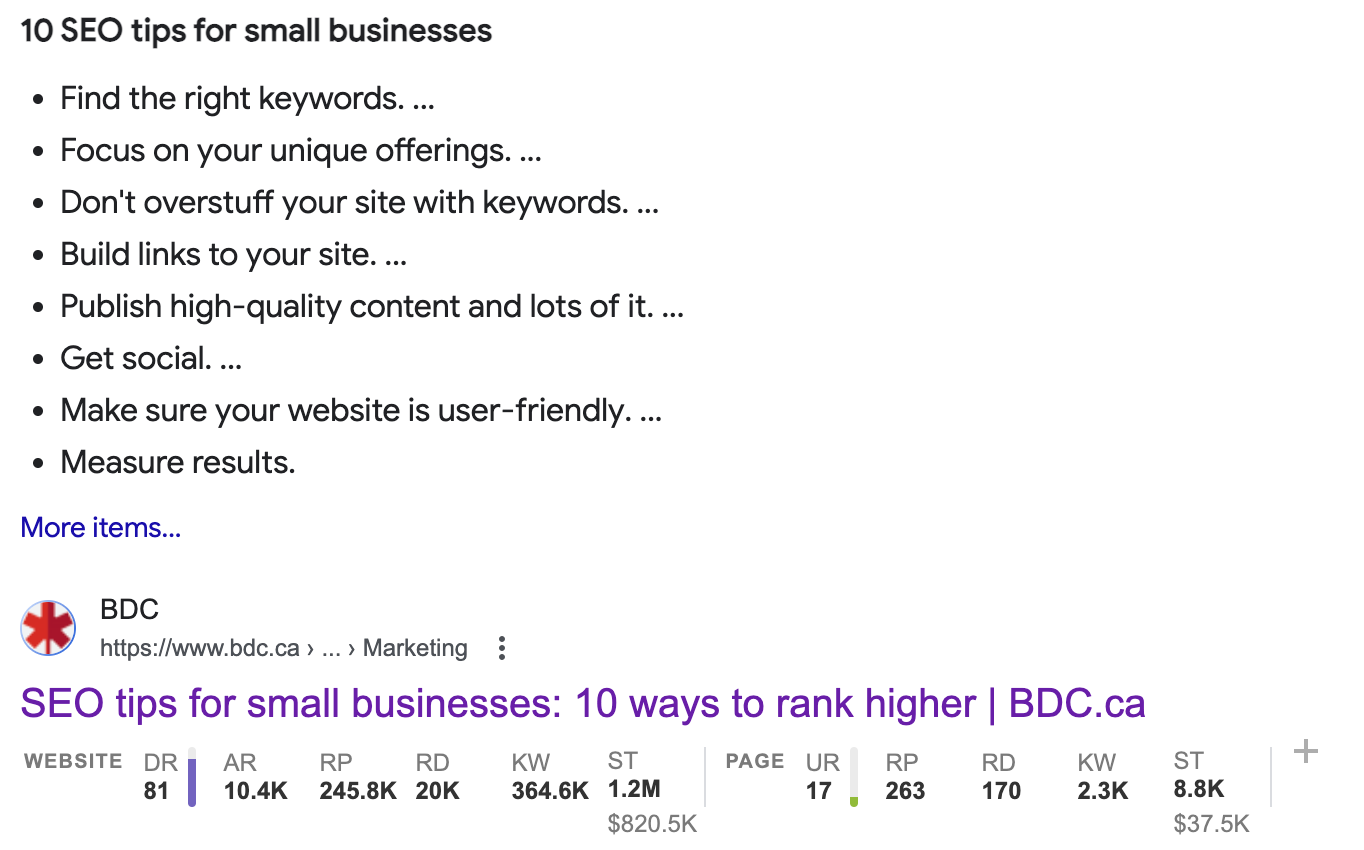
How to Create Snippet Bait Content?
- Do Keyword Research: Start by identifying a relevant keyword or key phrase for your content. This should be a query that users commonly search for.
- Understand User Intent: Analyze what users are looking for when they search using that keyword.
- Craft a Clear Answer: Write a concise, informative answer to the user’s query in 40-60 words.
- Structured Format: Present your answer in a structured format, such as bullet points or steps.
- Position at the Top: Place your snippet bait content at the beginning of your article or webpage.
The “People Also Ask” (PAA) section in SERPs is a dynamic feature that provides users with additional questions related to their original search query.
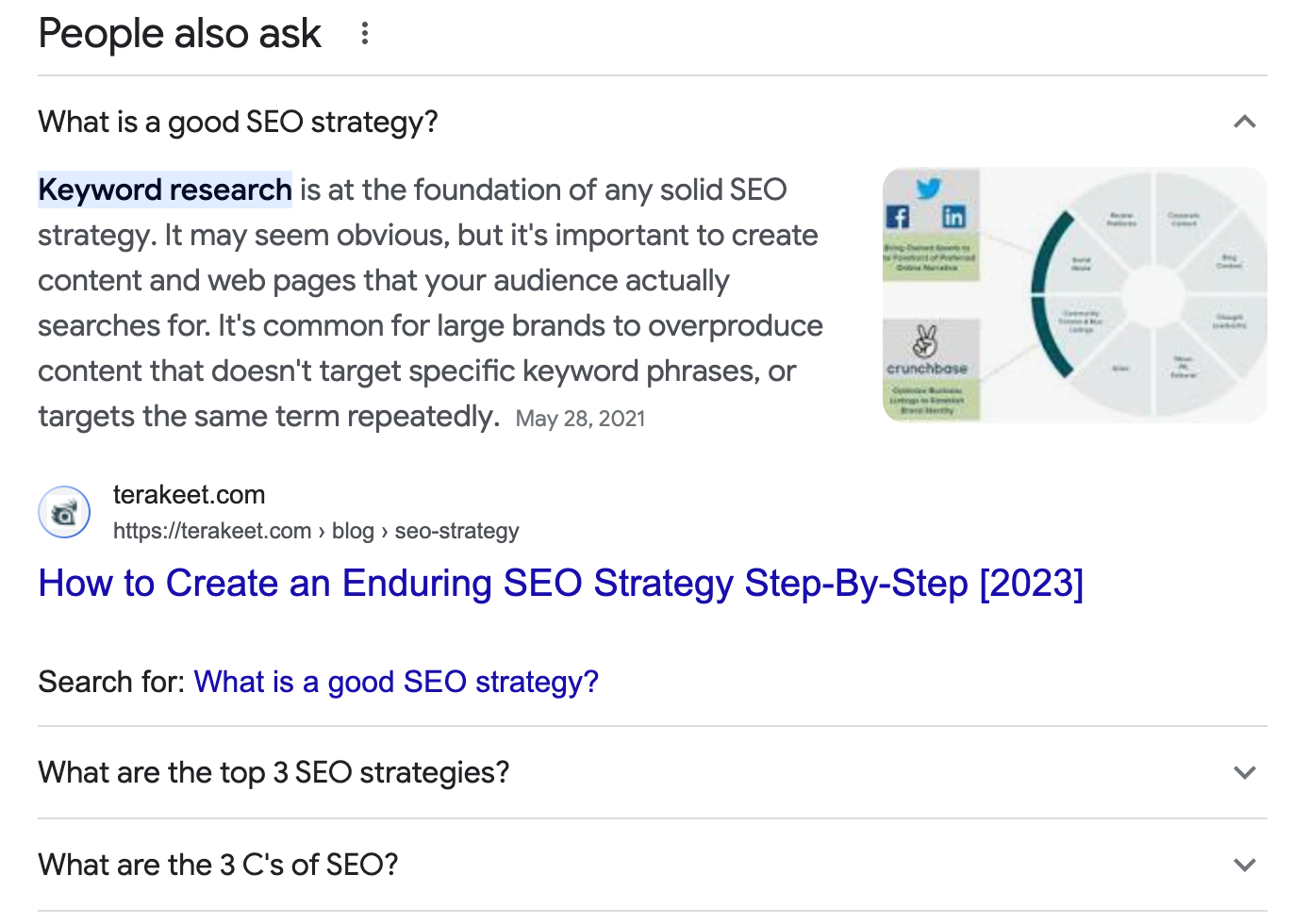
How to Appear in the “People Also Ask” Section?
- Relevance: Create highly relevant content that directly addresses user questions.
- FAQ section: Insert an FAQ section that you use to answer the most popular questions about the topic. The answers have to be concise and helpful for the users.
- Keyword research: the best queries for PAA are usually long-tail keywords
Not only do snippets and PAA answers offer concise solutions to users, but they also have higher click-through rates, leading to potential conversions.
Voice Search Optimization
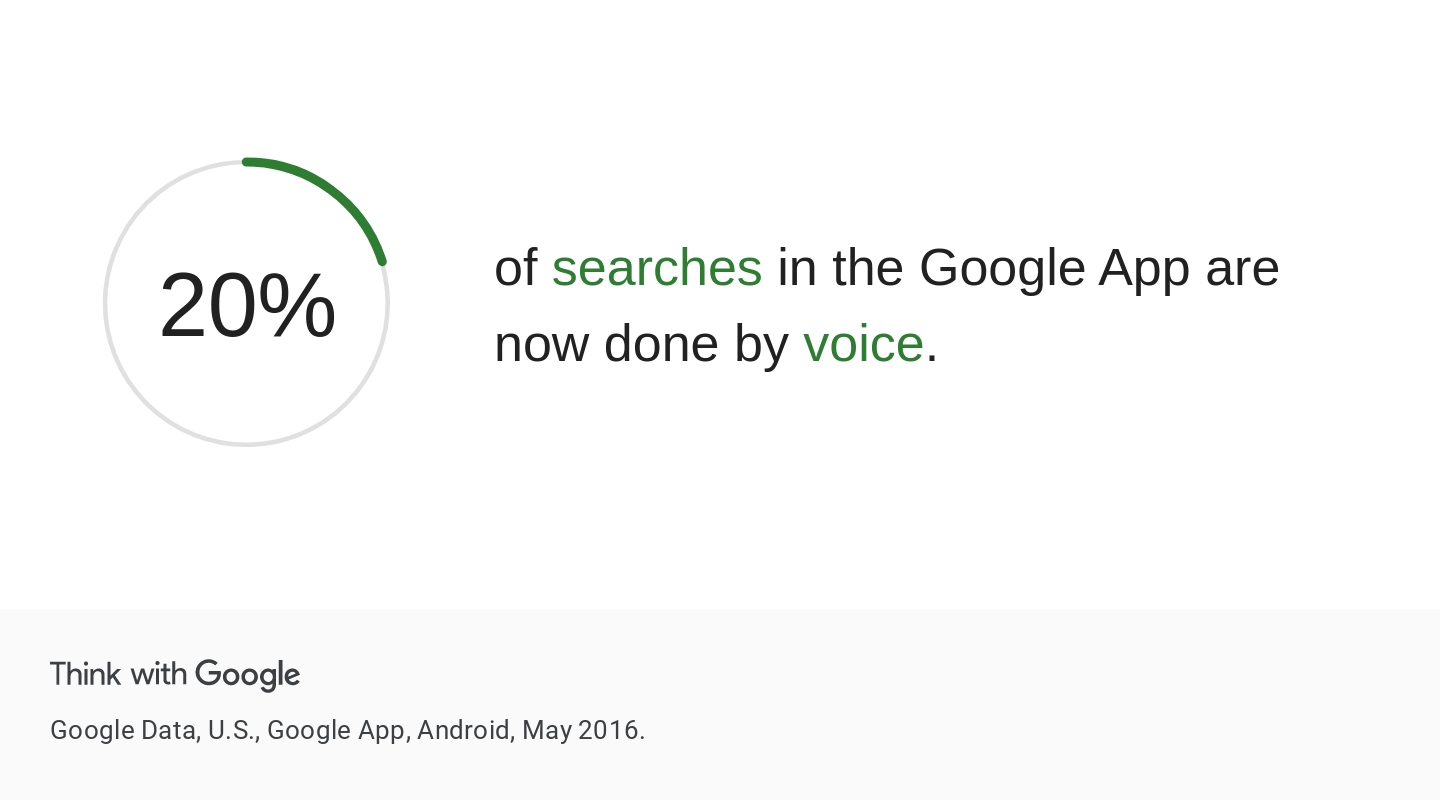
When it comes to optimizing for voice search, it’s all about natural conversation.
With the rise of devices like Siri and Alexa, people are frequently using the Google search bar with their voices to find information, ask questions, and interact with their devices.
The key is to create content that mirrors how people naturally speak, whether they’re asking a question or making a statement.
Answer questions concisely and avoid relying on keyword-stuffed phrases and forced language.
Optimize For Local SEO
Optimizing your business for Local SEO can increase your website traffic, improve your online reputation, and reduce advertising costs.
How To optimize for local SEO? Follow these simple steps:
1. Google My Business Optimization: Make sure your business profile on Google My Business is complete and accurate. This will enhance your visibility on Google Maps and local searches.
2. Keyword Optimization: Identify and incorporate relevant local keywords into your website content and metadata.
3. Customer Reviews: Encourage and manage customer reviews on platforms like Google, Yelp, and others to build trust and credibility.
Conclusion
To sum up, increasing your website’s visibility and number of returning visitors can be achieved through an effective SEO strategy.
There is a lot that can go into optimizing your website for search algorithms, such as matching the right keywords to the page’s search intent, making sure visuals are properly optimized, and regularly conducting site audits.
Overall, SEO requires more than just occasional attention, so take time to ensure that you are following all of these tips combined to get the best out of your SEO strategy.
What are your thoughts on this?
Do you have other SEO tips in mind? 6Feel free to comment – It would be great to hear your insights!






[…] implementing the right local SEO strategy and following these simple tips, you can boost your business ranking in no […]
[…] building may seem like a nightmare, but the truth is that with perseverance and the right SEO tips and strategies, you’ll have no problem boosting your […]